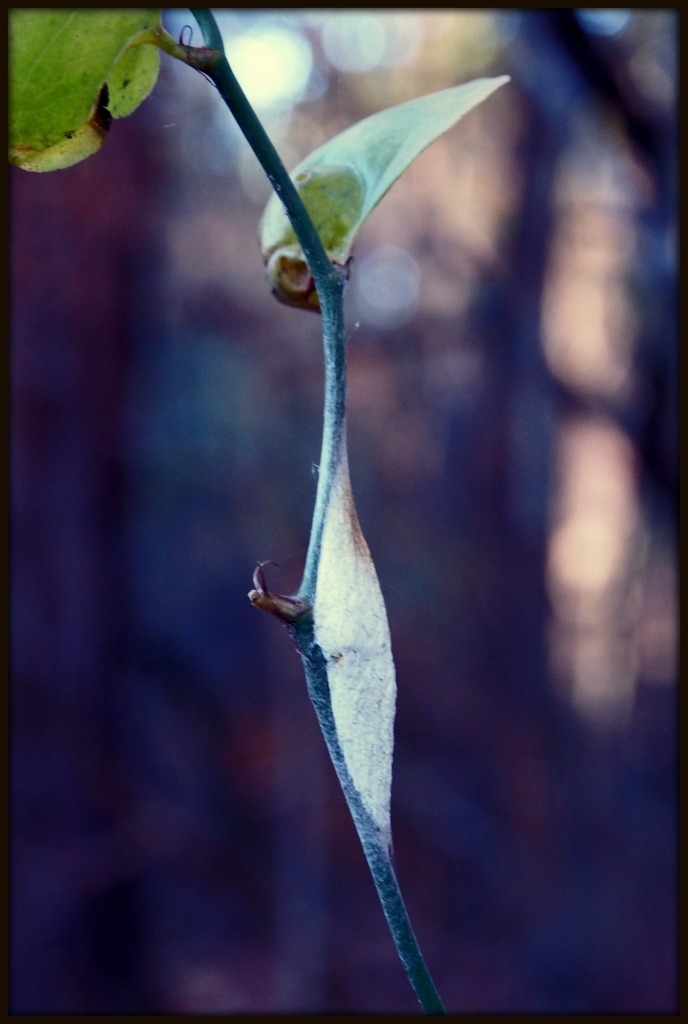I paused on my walk down Piney Woods Church Road late this afternoon to notice a silken cocoon that was attached to the side of a greenbrier stem. I photographed it in the waning light, trusting that identification would be relatively easy back home. After thumbing through various field guides and looking at many photographs online, I finally found a tentative match: the six-spot Burnet moth, Zygaena filipendulae. Alas, this moth is found in Britain and continental Europe, not in North America. Its closest Georgia relative is the Grapeleaf Skeletonizer (Harrisina americana), a common crop pest and certainly a possibility. However, this caterpillar evidently spins a cocoon among the fallen leaves at the base of its host plants, rather than along a stem. I could not locate any photographs of its cocoon, so I still think it is a possibility. I suppose I will have to wait until spring and see what emerges.

The cocoon is that of Tolype velleda aka Large Tolype. I have found these before. It should have hatched in October. However, most of the wild cocoons I have found over they years have either been parastized or already hatched. The cocoon will often persist on the stem or branch for a year or 2 after hatching.
I have caught the females at lights, overwintered the eggs and reared them to cocoon many times.